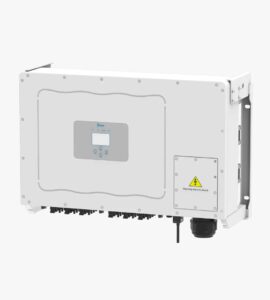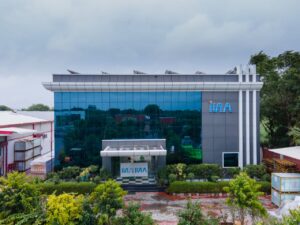
Article written by- Rasa Bihari Mishra | rbm.innovations@gmail.com | +91 84696 27669
About author: R B Mishra is a Consultant to Chemical, Pharmaceutical, & Other Process Industries. He provides End to End Technical Support to Help the Industries Maximize the Profitability and achieve Sustainable Business Growth. It helps them to take their businesses to the Next Level.
Rapid industrialization is a boon to the modern world. The contributions of the industries are immense. They’re helping in enhancing the prosperity level, poverty eradication, employment generation, improving the quality of our lives, and what not. Everywhere industrialization is adding tremendous value.
But the coin has sides. Every good thing has some bad attributes. Industrialization is not different. Why?
Because industries generate waste. Of course some industries generate more whereas some generate less. The wastes of some industries are more harmful to the environment while the wastes of some others have less environmental impact.
Irrespective of the quantity and characteristics of the wastes different industries are generating all of them are harmful to the society. The harmful wastes are nothing but the pollutants and they pollute the environment if not checked. The only solution is to do something to avoid the exposure of the pollutants to the environment.
But how to do that?
The solution has two parts. The first initiative is to avoid waste generation. However it’s not always possible to avoid waste generation completely. The idea is to minimize the waste generation.
You can’t avoid the waste generation completely. But you must avoid the adverse environmental impact at any cost. That’s why it’s essential to go for effective waste treatment. By using suitable end of the pipe treatment technologies you can make the wastes harmless to the environment and comply with the pollution control requirements. If you closely study the details of the wastes generated, you’ll observe that the liquid waste – waste water – forms the major part. And it’s really a challenge to treat waste water. When you talk about the waste water treatment the characteristics of the waste streams become important.
Waste Water Characteristics of Different Industries
Industries are different. Their products are different. The raw materials they use are different. And above all the manufacturing processes used by different industries are different.
But if you study the usage of raw materials you’ll find one interesting fact. Most of the industries are using water for manufacturing their products. Once you use water in the manufacturing processes there’ll be waste water generation. Of course if the water you use gets incorporated in your products then it’ll be a different story. That’s why most of the industries generate waste water. Of course the characteristics of the waste waters will be different. In fact what we’re Interested in is the pollutants level and how difficult it’s to treat the waste water. Equally important is the cost of waste water treatment. In order to make the treatment technologies effective you need to study the waste water details meticulously.
As for example the food industries generate a lot of waste water. Though the pollutants level in the waste water is very high, they’re biodegradable and non toxic. So in most of the cases biological treatment becomes effective.
Treatment Process
Selecting the right waste water treatment process has two aspects.
l It’s necessary to achieve proper treatment to make the waste water harmless to the environment.
l The treatment process must be technically feasible and economically viable.
The quantity and characteristics of waste streams vary a lot. And which treatment process will work for which waste water is not certain. It makes the selection of treatment processes challenging. It’s always better to test the treatment processes in the laboratory.
A well designed Waste Water Treatability Study can help you select the right treatment process.
Waste water treatment process has three stages.
l Primary Treatment
l Secondary Treatment
l Tertiary Treatment
Primary Treatment to Start with The waste water treatment starts with primary treatment. The major aim of the Primary Treatment processes is to make the waste water suitable for the Secondary Treatment.
Screening
The screening process is to remove the bigger particles from the waste water streams. Both fine and coarse screens are used to get rid of fine as well as coarse particles. It’s necessary to avoid problems in the later stages.
Equalisation of Waste Streams
In order to make the treatment effective, you need to collect the waste water streams for a predetermined period of time and mix them properly before you think about the treatment. This process is called ‘Equalization’. It acts as a buffer against the fluctuations in quantity and characteristics of the waste water streams.
Neutralisation
Most of the waste water streams generated in the industries are either acidic or basic in nature. Every treatment process has got its own optimum pH to be effective. That’s why it becomes necessary to adjust the pH using suitable acid or base. The selection of the right neutralising agent (acid or base) is critical for the effectiveness of the primary treatment. You can neutralise the waste water batch wise or by using continuous mode.
Get rid of the Suspended Solids
The waste water streams may contain fine suspended solids difficult to remove by screening. In addition to it initial operations -equalisation and neutralization -may generate suspended solids further. Suitable coagulating and flocculating agents are added to help the suspended particles come together and make bigger particles (Flocs).
Based on the characteristics of the suspended particles, either they will settle down or float up. Settling or floatation unit operations make the waste water free from the suspended solids based on the type of the solids. You can also use the filtration process to get rid of the solids and clarify the waste water.
Chemical Precipitation to remove soluble pollutants
Use of suitable chemical precipitating agents to precipitate out the soluble pollutants help. The type and quantity of precipitating agents depends upon which pollutants you want to get rid of and to what extent. The precipitating agents react with the soluble pollutants and make them insoluble. Once they become insoluble, you can remove them as you do with suspended solids.
Secondary Treatment
The Secondary Treatment processes do the major treatment of the waste water. The major aim of the Secondary Treatment processes is to make the waste water pollutants free.
Biological Treatment
In most of the cases Biological Treatment is used as main waste water treatment. Why?
Because it’s the most economical way to treat the waste water and comply with the pollution control norms. It’s the microorganisms who do the main job in biological treatment. They eat away the pollutants and make them harmless to the environment.
That’s why most of the Waste Water Treatment plants have Biological Treatment facility. It helps in making the treatment process cost-effective.
You can divide the biological treatment process into two categories.
Anaerobic Biological Treatment It works in the absence of air (oxygen). You need to ensure the absence of oxygen by carrying out the process in closed condition. The microorganisms break down the carbon compounds into Carbon Dioxide and Methane. You can use the methane generated during anaerobic biological treatment as fuel and save on your energy cost.
Aerobic Biological Treatment It works in the presence of air (oxygen). As oxygen is essential in this process, you need to maintain a minimum dissolved oxygen level by supplying air. The microorganisms break down the carbon compounds into Carbon Dioxide and water and make them harmless to the environment. But here you need to incur some cost in order to supply air.
Advanced Oxidation Technologies
Though biological treatment is the most economical there are limitations. Biological treatment processes are not effective especially when the waste water contains nonbiod-egradable and toxic compounds. In those situations non-biological treatment processes help.
Advanced Oxidation Processes can be used where biological treatment is ineffective. You can choose out of different types of advanced oxidation technologies available. Almost all advanced oxidation technologies utilize the power of hydroxyl radicals reactive enough to oxidise the pollutants. The way to generate hydroxyl radicals varies from technology to technology. Detailed parameters of your waste water streams will decide which technologies are right for you.
Wet Air Oxidation
You can choose Wet Air Oxidation process effectively when the waste water is not suitable for biological treatment. It’s a type of non-biological treatment process suitable when the quantity of waste water is high. In wet air oxidation process air (source of oxygen) is used under high temperature and pressure in the presence of a suitable catalyst to oxidise the pollutants. A lot of work is going on to develop improved catalysts for enhancing the treatment efficiency and reducing the temperature and pressure requirements. Of course the temperature and pressure requirements depends on the type of pollutants present in the waste water.
Tertiary Treatment
The Tertiary Treatment processes do the final treatment of the waste water. The major aim of the Secondary Treatment processes is to make the waste water totally harmless to the environment and suitable for disposal.
Final Filtration
Various fine filtration processes are used to clarify the waste water and make it completely free from suspended particles. In many waste treatment plants Sand Filters are used.
Activated Carbon Treatment
Activated Carbon Treatment is very effective in removing various types of pollutants from the waste water. Difficult to treat pollutants get adsorbed on to the surface of activated carbon. It’s very effective when the pollutants level is low. That’s why it’s used for final treatment before disposal. In most of the waste water treatment plants granular activated carbon is used.
Special Treatment
Different waste waters have different characteristics. Sometimes there are some pollutants which are difficult to treat effectively with common treatment processes. But it’s essential to make the waste water pollution free.
In those situations special treatment processes are used to get rid those difficult to treat pollutants. Of course the special treatment processes vary from waste water to waste water. Technical feasibility and economical viability decide which process to select.
Zero Liquid Discharge (ZLD)
In some industrial situations waste water discharge is not allowed. Or you are interested in using the water in your waste streams in order to deal with water scarcity. Whatever be the reason you can use Zero Liquid Discharge (ZLD) Technologies. Here the waste water is concentrated by using membrane filtration and evaporation processes. The concentrated waste water is dried to get the solid waste. The solid waste is disposed off by incineration or landfill. Whereas the water recovered from the ZLD process gets utilized in the manufacturing processes.
Let’s Conclude
Industrial Waste Water Treatment is critical for saving our environment from adverse impacts. The Treatment starts with Waste Stream Characterization and Segregation. Designing the Waste Treatment Process and the Facility is based on meticulous study of Waste Stream details. Treatability Study helps a lot in selecting the right Treatment process. The waste water treatment comprises of Primary Treatment, Secondary Treatment, and Tertiary Treatment. When you talk about the Secondary Treatment processes there are Biological and Non-Biological treatment Technologies.
However in order to make the Waste Water Treatment Cost-Effective you need to make Biological Treatment successful. Here Specially Developed Microorganisms and Engineering Innovations can add value.
Integrated Optimization of the Waste Water Treatment System along with adopting Technological Innovations can help you in achieving the Pollution Control Objectives.






